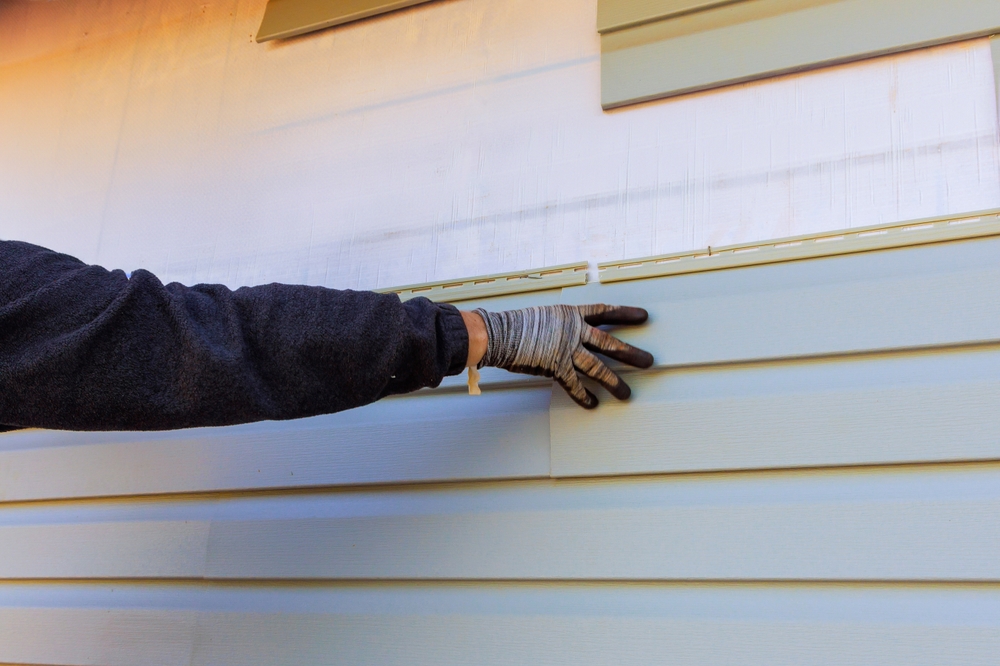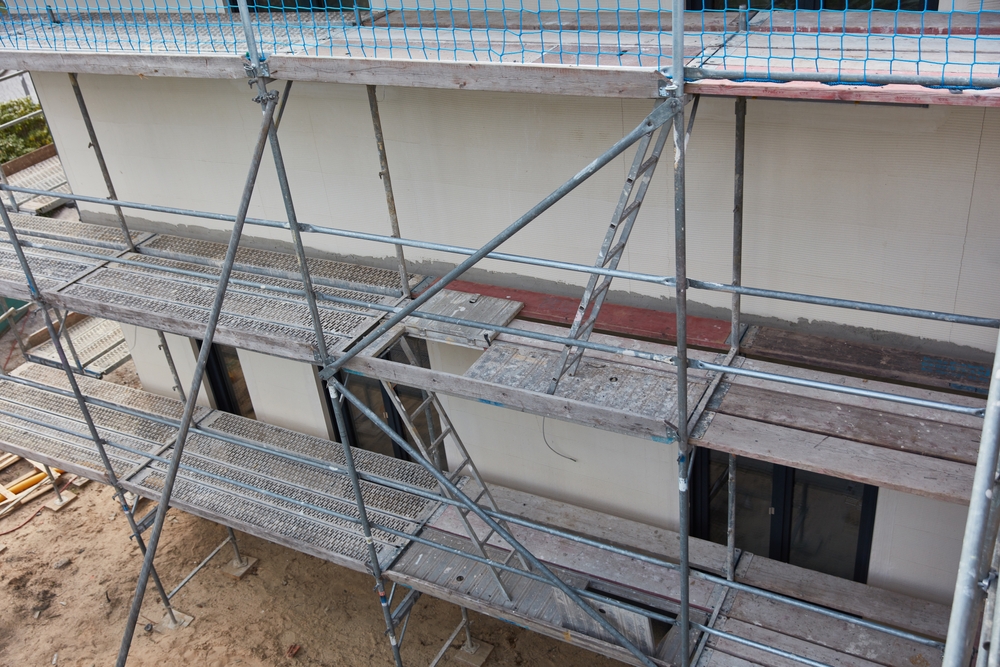When your siding shows signs of wear, the big question arises: should you repair it or replace it entirely? For homeowners and business owners in Lake Tahoe and Truckee, this decision can impact not only your property’s appearance but also its protection against snow, wind, and moisture. Factors like the type of siding, its age, and the extent of the damage all play a role in determining the best approach. In this guide, we’ll explore how to evaluate your siding, recognize warning signs, and weigh the benefits of repairs versus a full replacement, with tips for both residential and commercial properties in our unique mountain climate.
Understanding the Lifespan of Different Siding Materials
Not all siding is created equal. The material protecting your home or business has a typical lifespan, which can be significantly affected by the harsh weather conditions in the Sierra Nevada. Knowing what to expect from your specific siding type is the first step in deciding whether to repair or replace it.
Vinyl, Fiber Cement, Wood, and Engineered Siding
Each siding material offers a different balance of durability, maintenance, and longevity.
- Vinyl Siding: A popular and budget-friendly option, vinyl siding typically lasts between 20 to 40 years. It’s low-maintenance, but its lifespan can be cut short by physical impacts or extreme cold, which can make it brittle.
- Wood Siding: With proper care, wood siding can last for 20 to 50 years, or even longer. However, its longevity is highly dependent on consistent maintenance, including regular staining or painting to protect it from moisture and pests.
- Fiber Cement Siding: This is one of the most durable options on the market, with a lifespan of 50 years or more. Brands like James Hardie engineer their products to resist rot, fire, and pests, making it an excellent long-term investment.
- Engineered Wood Siding: Offering the look of real wood with enhanced durability, engineered wood siding can last 20 to 30 years. It is treated to resist moisture and impact better than natural wood, but it still requires proper installation and maintenance.
How Climate Impacts Durability in Truckee & Lake Tahoe
The expected siding lifespan in a snow climate is often shorter than in milder regions. In Truckee and Lake Tahoe, siding is under constant stress from heavy snow loads, ice accumulation, freeze-thaw cycles, and intense high-altitude UV radiation. These factors can accelerate wear and tear on any material. Wood can rot if moisture penetrates its finish, vinyl can crack in the cold, and even the most durable finishes can fade under the strong sun. This is why material choice and installation quality are so critical here.
Common Signs That Your Siding Needs Attention

Your siding will usually give you clear signals when it’s in trouble. Learning to spot these warning signs allows you to act before minor issues become major, expensive problems. Performing regular visual inspections, especially in the spring and fall, is key.
Cracks, Warping, and Rot
Physical damage is one of the most obvious red flags. Look for cracks, chips, or holes in individual panels. Check if boards are warped, buckled, or pulled away from the wall. For wood siding, gently poke any suspect areas with a screwdriver; if the wood feels soft or spongy, you likely have rot. Rot is a serious issue that compromises the siding’s integrity and can spread to your home’s underlying structure.
Fading, Peeling Paint, or Moisture Damage
The finish on your siding is its first line of defense. If you see widespread fading, it means UV rays have broken down the protective layer. Peeling, bubbling, or chipping paint is a more urgent sign that the finish has failed and moisture can now get to the material underneath. Also, look for dark streaks or water stains on the siding, particularly under windows or near rooflines, as this indicates a potential water intrusion problem.
Mold, Mildew, and Pest Damage
The growth of mold or mildew on siding, especially in shaded, damp areas, suggests that moisture is not drying properly. While sometimes this can be cleaned off, extensive growth could signal a deeper moisture issue behind the panels. Similarly, signs of pest infestation, such as small holes from insects or damage from woodpeckers, mean your siding is no longer providing a secure barrier.
Repairing Old Siding: When It Makes Sense
If the damage to your siding is limited and your siding is otherwise in good condition, a repair can be a practical and cost-effective solution. Deciding when to repair involves assessing the extent of the damage, the age of your siding, and the feasibility of the fix.
Minor Panel Damage and Cosmetic Fixes
Repairing makes the most sense for isolated issues. For example, if a few siding panels were damaged by a storm or an errant baseball, replacing just those sections is a logical choice. Small cracks, minor cosmetic blemishes, or a single warped board can often be repaired without needing to address the entire wall. This approach is ideal when the vast majority of your siding remains structurally sound.
Matching Materials and Colors
One of the biggest challenges with repairs is finding a perfect match. Siding colors can fade over time, and manufacturers may discontinue specific styles or shades. A new panel might stand out against the weathered siding surrounding it. A skilled contractor can sometimes find salvaged materials or use techniques to blend the repair, but a perfect match is not always possible.
Cost-Effectiveness vs Longevity
A repair is almost always cheaper upfront than a full replacement. However, you must weigh this against the long-term outlook. If your siding is nearing the end of its expected lifespan, spending money on repairs might be a temporary fix for a recurring problem. Pouring money into patching up old, failing siding can become a costly cycle, whereas a full replacement solves the root issue for good.
Full Replacement: When Repair Isn’t Enough
Sometimes, a repair is just a band-aid on a much larger problem. A full siding replacement is a significant investment, but in many cases, it is the wisest and most valuable choice for your property.
Widespread Damage or Aging Siding
If you are seeing problems on multiple walls—such as widespread warping, extensive rot, or dozens of cracked panels—it’s a clear sign that the siding system is failing. At this point, trying to patch every issue becomes impractical and ineffective. Similarly, if your siding is well past its prime (e.g., 30-year-old vinyl), it has simply reached the end of its useful life and should be replaced before it causes damage to your home.
Upgrading for Energy Efficiency
A full siding replacement offers a golden opportunity to improve your home’s energy efficiency. When the old siding is removed, you can add a layer of continuous insulation to the exterior walls. This, combined with a modern house wrap to stop air leaks, can significantly reduce your heating and cooling costs—a major benefit in our mountain climate.
Choosing Storm-Resistant or Fire-Resistant Materials
Replacing your siding allows you to upgrade to superior materials. In the Lake Tahoe and Truckee area, this is especially important. You can choose modern, storm-resistant siding that is less prone to impact damage. Even more critically, you can upgrade to a non-combustible material like fiber cement siding, which provides invaluable, fire-resistant protection for your home.
Residential vs Commercial Siding Considerations
The decision to repair or replace old siding also depends on the type of property. While the core issues are similar, the priorities for residential and commercial siding often differ.
Homeowner Priorities: Curb Appeal & Protection
For a homeowner, siding is a key component of curb appeal and personal pride. A beautiful exterior enhances the enjoyment of your home. Protection is equally important; you want to know your family and your investment are safe from the elements. A full replacement is often favored when a homeowner wants to completely change the look of their house or make a long-term investment in its protection and value.
Commercial Needs: Durability and Maintenance
For a commercial property owner, the primary concerns are durability, low maintenance, and long-term cost of ownership. Siding on an apartment building, retail space, or office needs to withstand heavy use and look professional for years with minimal upkeep. A full replacement with a highly durable, low-maintenance material like fiber cement is often the most financially sound decision, as it minimizes future repair costs and protects the asset.
How Regular Maintenance Can Extend Siding Life
Whether you repair or replace, proper maintenance is essential for maximizing your siding’s lifespan. A little proactive care can go a long way in preventing costly damage.
Seasonal Inspections in Snow and High-Altitude Areas
Performing regular siding maintenance in Truckee is non-negotiable. At least twice a year—in the fall before snow arrives and in the spring after it melts—walk around your property and closely inspect the siding. Look for any of the damage signs mentioned earlier. These seasonal checks help you catch small problems before they escalate.
Cleaning, Caulking, and Preventative Repairs
Regularly clean your siding according to the manufacturer’s recommendations to remove dirt, grime, and any mildew growth. Check the caulking around windows, doors, and corner trim. If it’s cracked or peeling, remove the old caulk and apply a fresh bead to maintain a watertight seal. If you do find a small crack or a loose panel during your inspection, addressing that minor preventative repair immediately can prevent a much bigger problem later.
Choosing a Trusted Lake Tahoe Siding Contractor
Your siding project’s success ultimately depends on the quality of the team doing the work. Choosing a reputable Lake Tahoe siding contractor is the most important step in the process.
Licensed, Certified, and Experienced Installers
Ensure any contractor you consider is fully licensed and insured. Look for certifications from siding manufacturers, such as being a James Hardie Elite Preferred Contractor. These certifications mean the installers have been specifically trained to install the products according to the manufacturer’s strict standards, which is often required to validate the warranty.
Local Knowledge for Climate-Specific Challenges
A local contractor brings invaluable experience with our region’s specific climate challenges. They understand the building codes, know which materials perform best here, and use installation techniques proven to withstand heavy snow and freeze-thaw cycles. Their local expertise is your best defense against premature siding failure.
Frequently Asked Questions about Is It Better to Repair or Replace Old Siding?
1. How do I know if my siding should be repaired or replaced?
Minor cracks, small dents, or isolated panel damage can often be repaired. Widespread warping, rot, or water damage usually indicates it’s time for a full siding replacement. A Lake Tahoe siding contractor can inspect and advise.
2. Does the type of siding affect repair or replacement decisions?
Yes. Vinyl siding may crack in cold weather but can often be patched, while fiber cement or engineered wood may require replacement if panels are severely damaged. Material choice affects durability, cost, and maintenance in Truckee and Tahoe’s snow climate.
3. Can repairing old siding extend its lifespan?
Absolutely. Timely repairs like fixing cracks, re-caulking, or replacing a few panels can prevent water intrusion, rot, and pest damage, helping your siding last longer. Regular siding maintenance in Truckee is key.
4. What are the cost differences between repair and full replacement?
Repairs are usually more affordable upfront, but repeated fixes can add up over time. Full replacement costs more initially but provides long-term durability, better insulation, and protection from Tahoe’s harsh weather.
5. Should I hire a professional siding contractor or attempt DIY repairs?
Professional Lake Tahoe siding contractors ensure repairs and replacements are done safely, accurately, and according to manufacturer standards. DIY repairs risk hidden damage, improper sealing, or mismatched materials, leading to bigger problems.




